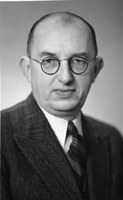
What do maths and blood clots have to do with each other?
Mathematics can help predict thrombosis. Mathematician Mark Alber has developed models that even aid in suggesting treatments. In the Kloosterman lecture on 27 June, he will explain how this works.
The mathematical models of Professor Mark Alber and his team can help us by suggesting treatment strategies for patients with thrombosis. The have created so-called digital twins. These twins serve as virtual representations of real people, used for simulation, testing and monitoring. Alber: ‘Together with the University of Pennsylvania School of Medicine, our group has introduced new twins specifically for modelling clotting in individual patients. These mathematical models can be calibrated for suggesting patient specific treatment strategies.’
Alber highlights the importance of this work: ‘Thrombosis is one of the leading causes of death worldwide. Evaluating and predicting the mechanical stability of a blood clots under various conditions such as deformation, contraction and different flows, is necessary for evaluation of the risk of thrombosis.’

More about the Kloosterman chair
Each year, a distinguished mathematician is appointed as a visiting professor at the Mathematical Institute. This chair is named after Hendrik Douwe Kloosterman (1900-1968). Kloosterman, who lectured in Leiden from 1930 and became a full professor in 1947, is renowned for his work in analytic number theory, particularly for ‘Kloosterman sums’
Why you should join the lecture
Alber is currently visiting the Mathematical Institute (MI) on a four-month sabbatical with a prestigious Fulbright US Scholar Fellowship. He is hosted by professors Roeland Merks and Arjen Doelman.

Merks is delighted that Alber will be part of the MI for the coming months: ‘Mark is a world-renowned expert in Mathematical Biology with a stellar track-record in modelling multicellular systems. He brings along years of experience.’
Doelman confirms this heartily: ‘Mark gives great presentations and is exceptionally strong in communicating with colleagues in fields outside mathematics. He shows how powerful mathematics can be in the context of other scientific areas. Therefore, his talk will relevant and interesting for many colleagues in our faculty.’
Please join the Kloosterman lecture on Thursday 27 June
at 16:00 hrs. in BE 0.10 in the Gorlaeus Building
Register hereMore about the exchange programme
The Fulbright Program is the US government’s flagship programme for international educational research and cultural exchange.
The programme facilitates exchange between the United States and other countries for both scholars and students. The Fulbright Program was the vision of US Senator J. William Fulbright (1905-1995). Since 1946, the Fulbright Program now operates in 160 countries and has provided over 400,000 students, scholars, teachers, artists and professionals of all background and in all fields the opportunity to study, teach and conduct research, exchange ideas and contribute to finding solution to complex global challenges.
The programme has been active in the Netherlands since 1949. In the past 75 years, thousands of American and Dutch students, scientists and teachers have taken advantage of the opportunity to work and study in each other’s countries. This exchange often has a significant impact on the lives and careers of the participants, even long after returning home.
Interested?
Are you interested in studying or working in the USA? The Fulbright Programme has several scholarships for students, PhD candidates and scientists.
Via the EducationUSA Center, the Fulbright Programme also offers advice on studying and working in the USA.
